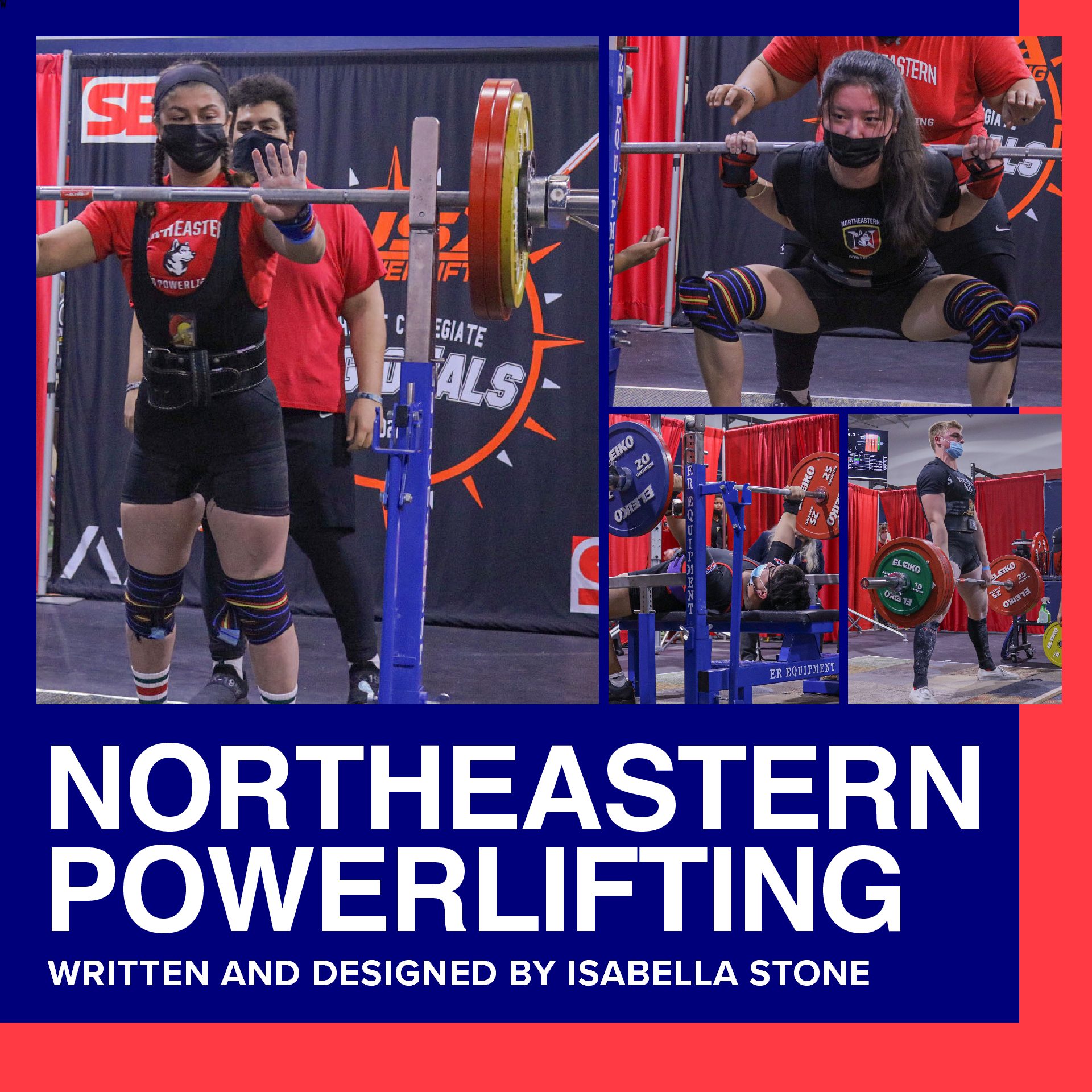
The weekend of February 12, the Northeastern Powerlifting team competed in the Northeast Collegiate Regionals. Women and men competed in the equipped division, many reaching to totals that qualified them for the national competition in Chicago at the end of March. But what does this all mean? Usually, when I say that I am on the Powerlifting team, people always say “That’s so cool… but like, what do you even do?”
For starters, powerlifting is an individual sport, with two different divisions – raw and equipped, and NUPL competes in both. At the meets, each lifter attempts to lift the most amount of weight they can in the three compound lifts: squat, bench press, and deadlift. Each competitor gets three attempts for each lift, with specific rules and regulations. NUPL’s main focus in the spring semester is equipped powerlifting — where competitors use compressive gear that helps them lift more weight. The lifter aims to lift an achievable amount of weight for their first lifts, also known as their openers. Then the lifter tries to lift more with each attempt. The total “score” that an individual gets is the sum of the highest successful attempts in each lift.
To better understand this, let’s look at the totals from Raven Mathews, a third-year computer science and design major competing in the Women’s Equipped Collegiate 52 kg Class.
Notice how her total is 325 kg. That is because the total only counted her 132.5 kg squat, her successful 65 kg bench, and her 127.5 kg deadlift. The qualifying total, which is the total required to be able to compete at Nationals in a given weight class, is 230 kg for the 52 kg women’s equipped class. Mathews absolutely crushed this, by almost 100 kg.
Other members of the team also were able to achieve qualifying totals, such as Mario Martinez, a first-year health science major in the Men’s 90 kg Equipped Class. Martinez needed to get a 577.5 kg total, which for reference, is a total of over 1200 lbs. After having a meet attempt plan that would put him at a total of 592.5 kg, he achieved a 577.5 kg total after successful top lifts on squat and bench, and a successful second attempt on deadlift.
Martinez said, “Nothing is guaranteed with equipped powerlifting.” There are always going to be “bad” lifts, and that is why competitors must plan carefully for meets. The equipped division is much more technical than the typical raw powerlifting that most people know. The gear has to be used perfectly though, as one small thing can throw the whole lift off. The chance that something goes wrong is very high, so that is why Martinez planned his attempts high enough to guarantee a qualifying total if one lift was missed.
But all of this is what makes the sport so captivating to powerlifters. Despite the “bad” lifts or the mental struggles we face when we fail a lift, the challenges encourage us to push our limits, hit new personal records, and support one another. We’ve created a family out of what is normally an individual sport. Lauren Flynn, a fourth-year cell and molecular biology major, and the president of the women’s team states “Because we see each other three to four nights a week, we are always the people that check-in and care for each other. We support one another to achieve our own goals.”
Flynn and the rest of the team will be flying to Chicago in late March to compete at the Powerlifting Collegiate Nationals. Those who didn’t qualify still get to travel, in order to cheer their teammates on. But everyone has a long road of training ahead to prepare. The weeks leading up to the meet are crucial. Not only for the time dedicated to practice and gaining strength and skill, but also to stay focused on pushing past mental and physical barriers to reach new goals.